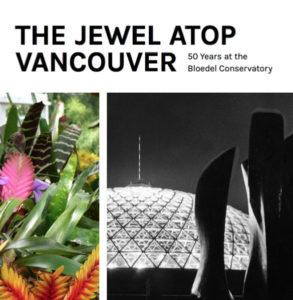Bloedel Conservatory has a new roof to ensure visitors are comfortable and safe.
This large and complex project replaced all 1,400 acrylic panels of the conservatory’s iconic domed roof over seven months in 2014.
Project details
This was a large and unique project as the dome structure has more than 1,400 individual “bubble” panels of 32 different sizes. While the conservatory roof was strong, the original roof was more than 40 years old. Some individual roof panels needed to be replaced because they had cracked and were leaking.
What happened during construction
The replacement of the roof was a multi-phase process.
Phase one of the project replaced:
- The centre dome panels
- The roof section over the building entrance
- The fan and ventilation system
 Scaffolding covered the entire dome, as shown in the cross-section diagram. Due to the unique structure, special scaffolding was used to cover – but not touch – the dome. A protective cover wrapped around the scaffolding.
Scaffolding covered the entire dome, as shown in the cross-section diagram. Due to the unique structure, special scaffolding was used to cover – but not touch – the dome. A protective cover wrapped around the scaffolding.
Phase one was completed in spring 2014. The remainder of the roof project, or Phase two, was completed by late summer 2014.
Keeping birds, plants, and visitors safe
Special care and attention was paid to protecting the conservatory’s beautiful birds, exotic plants, and visitors during construction. Protective netting was used inside the dome to ensure no birds escaped and no outside birds could enter, and to catch any falling debris.



